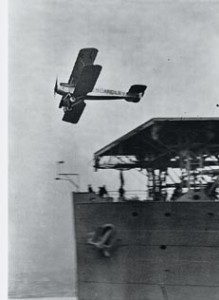From the Navy’s Birthday to Black Thursday

This Week in American Military History (by W. Thomas Smith Jr.):
Oct. 12, 1862: Confederate cavalry commander Gen. James Ewell Brown “J.E.B.” Stuart completes his “second ride” around Union Gen. George B. McClellan’s Army of the Potomac.
Oct. 13, 1775: Happy Birthday U.S. Navy!
According to the Naval History and Heritage Command:
“…meeting in Philadelphia, the Continental Congress voted to fit out two sailing vessels, armed with ten carriage guns, as well as swivel guns, and manned by crews of eighty, and to send them out on a cruise of three months to intercept transports carrying munitions and stores to the British army in America.
“This was the original legislation out of which the Continental Navy grew and as such constitutes the birth certificate of the navy.”
Oct. 14, 1943: In what will become known as “Black Thursday,” U.S. Army Air Force B-17 Flying Fortresses – elements of the famed 8th Air Force – attack the ball-bearing plants (critical to Germany’s aviation industry) at the heavily defended Bavarian city of Schweinfurt. Though the raid is successful, scores of bombers – and more than 600 airmen – are lost.
According to Bruce Crawford writing for Aviation History magazine: “There is not much there to commemorate the carnage that took place overhead so many years ago, and that is too bad, because Schweinfurt should rank with Pickett’s Charge, Bataan, Chosin and other battlefields as an epic of American heroism. As it is, we can only look at grainy wartime pictures of the bombers going down in flames, and try to imagine what it was like for the men trapped inside.”
Oct. 16, 1859: Abolitionist John Brown and his raiders seize several buildings in Harper’s Ferry, Virginia (see next week).
Oct. 17, 1777: After having been decisively defeated by Continental Army Gen. Horatio Gates at Second Saratoga (see Oct. 7), British Gen. John “Gentleman Johnny” Burgoyne surrenders his entire army, between 5,000 and 7,000 men.
Oct. 17, 1922: Lt. Commander Virgil C. Griffin, piloting a Vought VE-7SF bi-winged fighter, makes the first-ever “official” takeoff from a U.S. Navy aircraft carrier, USS Langley – a coaling ship which had been converted into America’s first aircraft carrier – in York River, Virginia.
Though Griffin is indeed the first man to takeoff from a “carrier”, he is not the first to takeoff from a warship. That distinction belongs to Eugene B. Ely who took-off from a platform affixed to a cruiser in 1910.
AUTHOR’S NOTE: “This Week in American Military History,” appears every week as a feature of HUMAN EVENTS.
Let’s increase awareness of American military tradition and honor America’s greatest heroes by supporting the Medal of Honor Society’s 2010 Convention to be held in Charleston, S.C., Sept. 29 – Oct. 3, 2010 (for more information, click here).